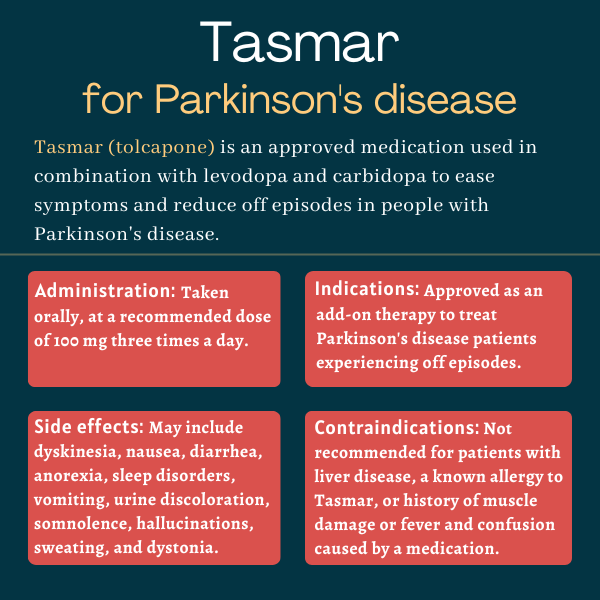FAQs about Tasmar
The U.S. Food and Drug Administration approved Tasmar in January 1998 as an add-on treatment to ease symptoms in Parkinson’s patients receiving levodopa and carbidopa. However, due to an increased risk of liver failure, the therapy is only recommended for patients experiencing motor fluctuations and who failed to respond to or who are not candidates for other similar therapies.
It remains uncertain whether Tasmar is safe for use during pregnancy. While animal studies suggest it may cause harm to a developing fetus, there is a lack of clinical data examining its effects in pregnant patients. If patients are planning to become pregnant while on Tasmar, it is recommended they seek advice from their healthcare provider and discuss any potential risks or concerns.
When taking Tasmar, individuals may experience intense drowsiness or unexpected episodes of falling asleep during their daily activities. To ensure safety, patients should avoid driving or participating in any potentially dangerous tasks until they understand how the medication affects them. If any of these adverse side effects occur, it is advisable for patients to consult with a doctor.
Based on clinical trial data, benefis from Tasmar may be observed as early as six weeks after starting treatment. In a trial involving patients without motor fluctuations, significant improvements in activities of daily living were seen after six weeks, which were sustained for at least one year, while reductions in levodopa doses were significant as early as after two weeks. However, as Parkinson’s disease is different from one person to the other, and not all patients respond similarly to a medication, the timeframe for seeing benefits from Tasmar also will vary.
While clinical trials have not reported weight gain as a side effect of Tasmar, hair loss has been seen among a very small percentage of patients treated with Tasmar. Additionally, some individuals taking levodopa-based medications have reported experiencing hair loss and weight gain. If patients notice hair loss or weight gain after beginning treatment with Tasmar, they should discuss these side effects with their healthcare providers.
Related Articles

 Fact-checked by
Fact-checked by 





